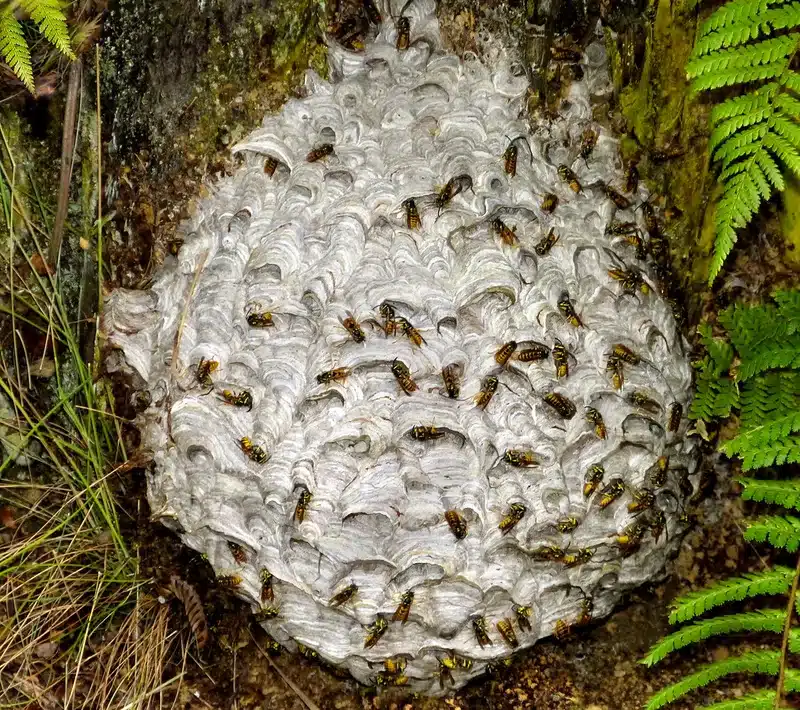Spring and late summer bring pollinators and often unwanted wasp nests near our homes. Many try DIY nest knockdown, only to see wasps return and rebuild. In my years working across the DMV, I’ve learned that proper nest removal means combining effective treatment, the right gear and thorough exclusion.
Why Stinging Insect and Wasp Nest Removal is Crucial for Homeowners?
Wasp nests pose big health and home risks. Social wasps can sting repeatedly and release pheromones that draw in nest mates. According to the University of Kentucky, there are about 225,000 ER visits for stings each year.
Nests inside walls can weaken drywall or chew through flex ducts. Extension sources note yellowjackets will chew through drywall to expand voids.
I often see the most aggressive nests in August. That extra bite of late-summer heat can make a removal attempt truly risky.
Understanding Wasp Nesting Cycles in the Mid-Atlantic
Queens emerge in spring and start new nests. According to University of Maryland experts, queens appear in March-April.
Workers build up colonies through May-July. By August-September, some nests host thousands of wasps. Colonies die back at the first frost, leaving only mated queens to overwinter.
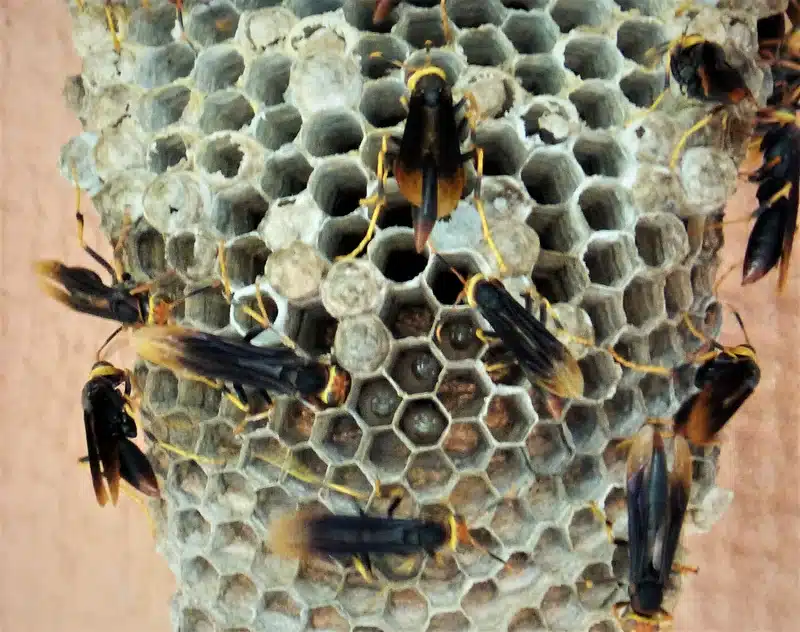
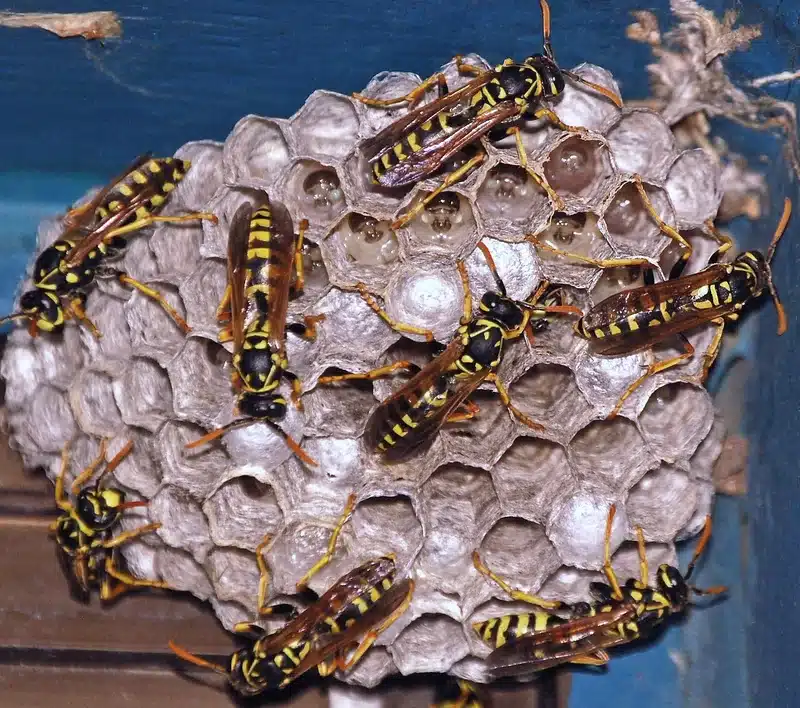
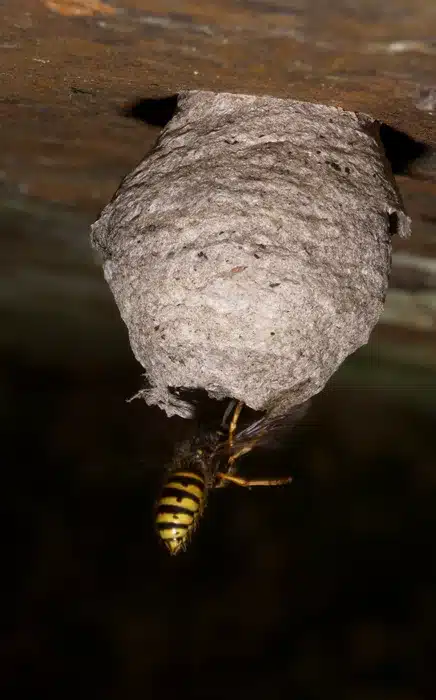
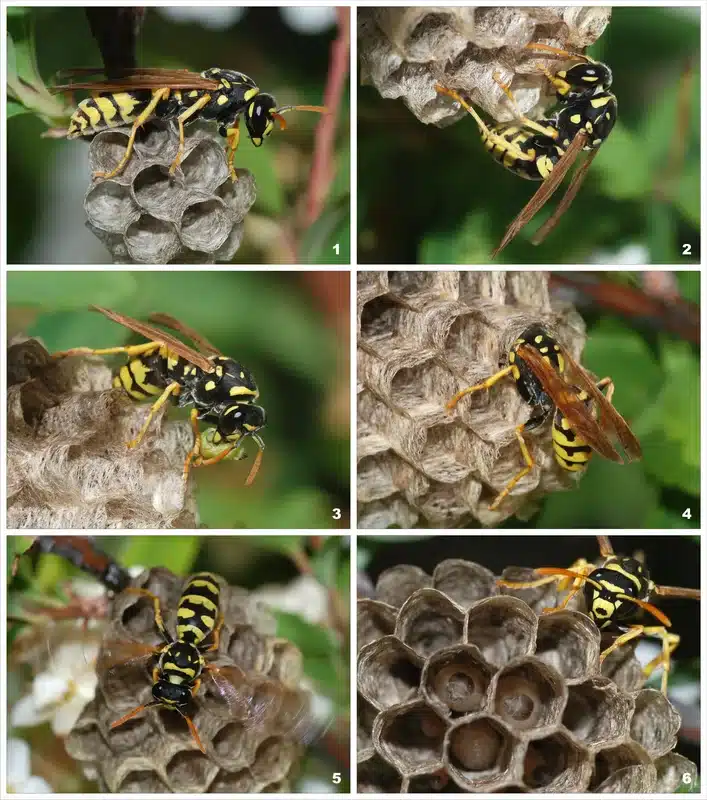

Queens rarely reuse the same nest, but good spots draw them back year after year. Residual pheromones make attics, soffits or burrows appealing again (restonyc.com).
Identifying Common Wasp Species, Yellow Jacket Infestations and Nest Types
Learn more on Types of Wasp Nests: How to Identify and Remove Them.
Eastern Yellowjackets
These wasps nest underground or in wall voids. Late summer colonies can grow to 3,000-5,000 workers.
Bald-Faced Hornets and Hornet Nest Identification
They build football-shaped paper nests high off the ground. A single nest can host several hundred workers and defend aggressively.
Paper Wasps
Paper wasps hang open-comb umbrella nests under eaves or rafters. Their colonies rarely top a few hundred members.
Risks of DIY Wasp Nest Removal Attempts
Many homeowners face legal and gear hurdles with do-it-yourself.
- Only certified applicators can buy or apply restricted-use pesticides.
- Mistaking paper wasps for honey bees can lead to improper treatments.
- Lack of full-coverage protective gear and no liability insurance heighten risks.
Why Professional Wasp Nest Removal Outperforms DIY Solutions
Licensed technicians bring specialized training and equipment.
- We follow the EPA’s recertification cycle and apply proven dusts and aerosols.
- We track local IPM rules in Arlington, DC and Montgomery County.
- Our registered technicians carry liability coverage in case of unexpected incidents.
Protective Equipment & Advanced Tools for Wasp Nest Removal
Professional teams use specialized gear to work near nests:
- Full-length sting suits sealed at wrists and ankles
- Telescoping dusters and long-range jet aerosols
- Red-filter headlamps for night-time inspections
Bellows dusters help inject dust deep into voids. With a jet aerosol, we can reach aerial nests from a distance.
Professional Wasp Nest Removal Workflow that Prevents Return Visits
Our 4-step process combines treatment, removal and prevention.
Step 1: Inspection & Nest Mapping
We track entrances, flight lines and hidden voids in daylight. We mark ground nests for evening treatment.
Step 2: Night-Time or Pre-Dawn Treatment
With most workers inside, we inject dust or aerosol into single-entry nests. We leave the envelope intact for 48-72 hours so returning wasps pick up residues.
Step 3: Physical Removal & Disposal
After a zero-flight interval, we cut aerial nests or excavate ground burrows. We seal all material in doubled contractor bags for disposal.
Step 4: Exclusion and Site Modification
We seal soffit gaps >= 3 mm, repair screens and add hardware cloth to vents. We fill abandoned burrows with soil and clean spilled sweet drinks to remove future attractions.
Environmental & Regulatory Considerations in Wasp Nest Removal
We avoid treating flowering plants to protect pollinators. Treated nests become non-hazardous waste once they’re dry. Local ordinances, like DC’s IPM rules, often require written pesticide records.
Seasonality: Key Times for Wasp Nest Removal and Prevention
- March-April: best for exclusion repairs and queen trapping
- May-June: embryo nests are small-minimal pesticide needed
- July-September: peak activity demands urgent professional help
- October-November: remove abandoned nests before leaf-drop
Integrating Wasp Nest Removal into Ongoing Pest Control Plans
Our TriGuard program bundles termite, pest and rodent services under one plan. It includes three tri-annual visits per year and covers wasp nest removal when the nest is accessible.
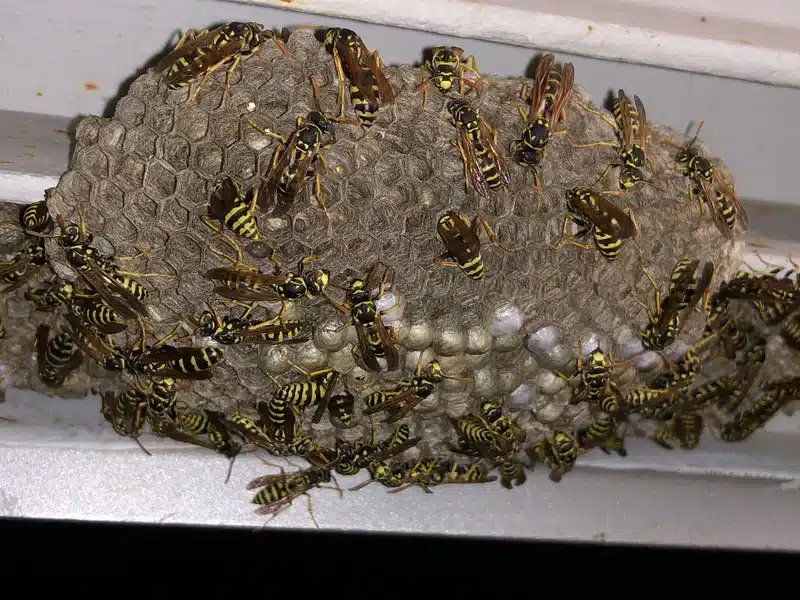
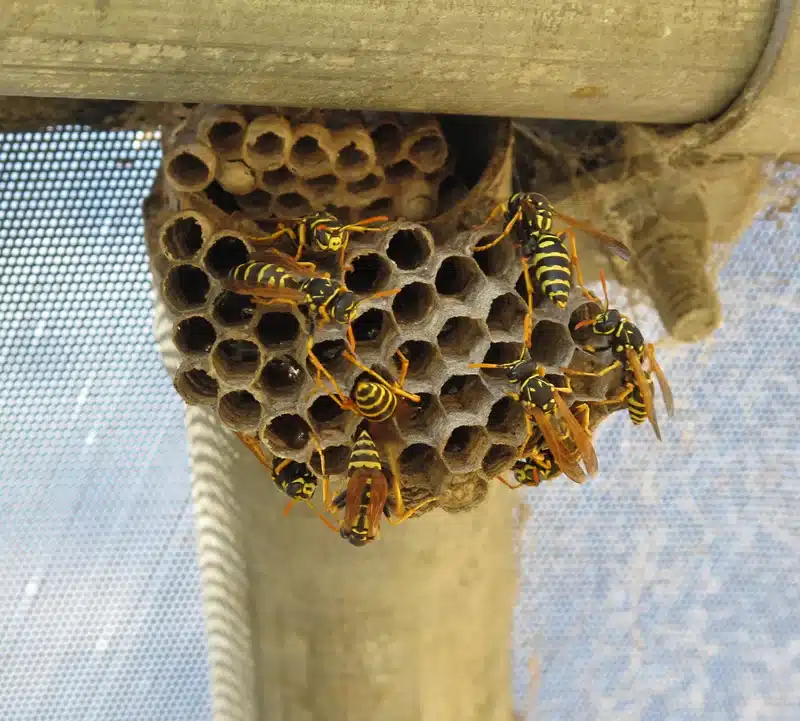
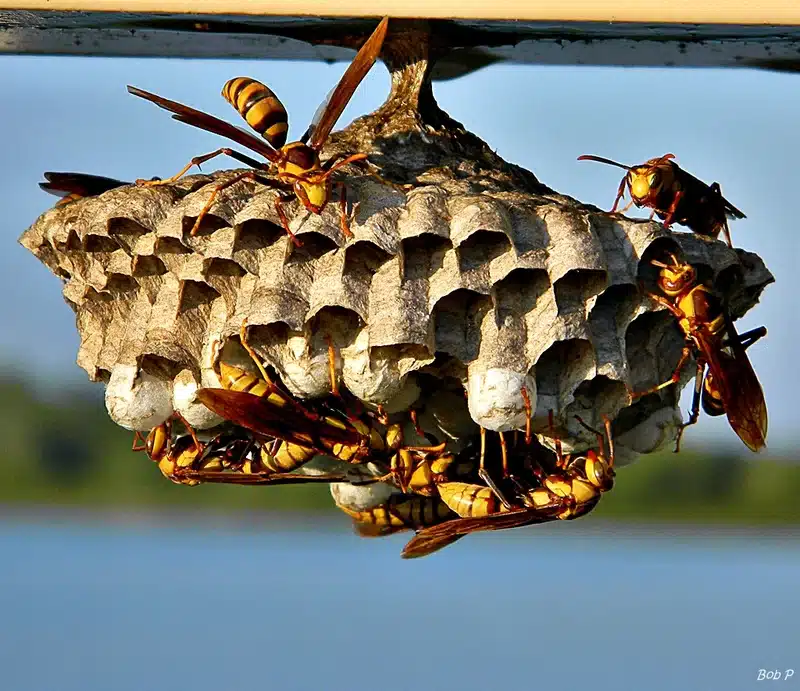
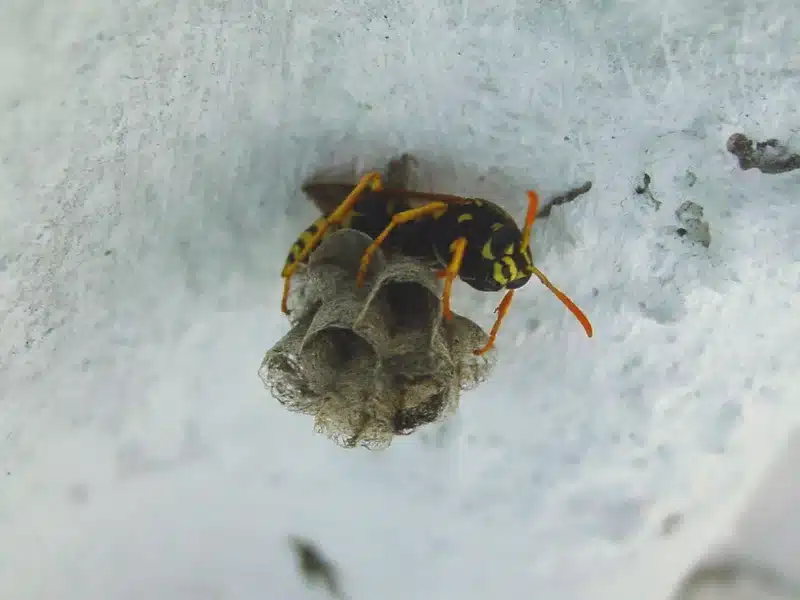
For comprehensive coverage, SeasonGuard+ adds mosquito, tick and extra pest services across nine visits per year. Both plans offer unlimited callbacks and one monthly bill.
Localized Wasp Nest Removal Services in the DMV Area
We serve Arlington, Northern Virginia, Silver Spring, and Bethesda with registered technicians.
- Pest Control Arlington
- Northern Virginia Pest Control
- Silver Spring Pest Control
- Pest Control Bethesda
As a third-generation family team, we offer direct expert phone consultations and responsive service.
Customer Success Stories: Wasp Nest Removal Testimonials
- “Better Termite has been keeping our house bug free for years. They treated a wasp nest under our deck with precision and respect.” - Karen Vaught
- “Our home has been termite and pest-free for over 30 years. Their attention to detail on every visit shines.” - Tracy Grubbs
- “They removed a mud dauber’s nest and even cleared spider webs without being asked. That level of care is rare.” - Sandi Marino
In every job, our registered technicians focus on details that matter most to homeowners.
Frequently Asked Questions about Wasp Nest Removal
Conclusion
Effective wasp nest removal means more than knocking down a nest. It takes expert treatment, thorough removal and smart exclusion. Our team’s deep DMV experience and family-owned roots ensure every job gets the care it deserves. Call us at 703-683-2000 or email info@bettertermite.com for questions or an estimate.
How soon after professional removal can I re-enter the area?
+
Most dust labels require about 24 hours or until the dust is dry. Always follow your technician's re-entry guidance.
Can I remove an old, inactive wasp nest myself?
+
If you're sure no live wasps remain, you can gently sweep away the nest. When in doubt, contact a pest control company.
Will wasps return after a professional removal?
+
Proper dust treatments, exclusion repairs and removal of pheromone cues help keep wasps from rebuilding.
What if someone near the nest is allergic to wasp stings?
+
Anyone with systemic symptoms like hives or wheezing should call 911. People with prescriptions should carry their epinephrine auto-injector.
How do professionals differentiate wasps from honey bees?
+
Registered technicians use visual cues and behavior patterns to spot honey bees. We never treat protected bee colonies.
Do you offer a warranty on wasp nest removal?
+
While we don't use that term, our plans include unlimited callbacks. We'll return to address any activity between scheduled visits.
Can I spot treat a nest in my attic?
+
Yes. We use aerosol foams or dusts injected through small access points. Then we seal openings against future entry.
With five years of hands-on experience in the pest control industry, George Schulz is a registered technician with the Virginia Pest Management Association and a proud third-generation professional in a family business that's been protecting homes for over 57 years. He manages and trains a team of service pros while also leading internal research efforts—recently spearheading a deep-dive review of thousands of documents on pest control materials to hand-pick the most kid and pet friendly, most effective solutions tailored specifically for homes in the DC metro area.
